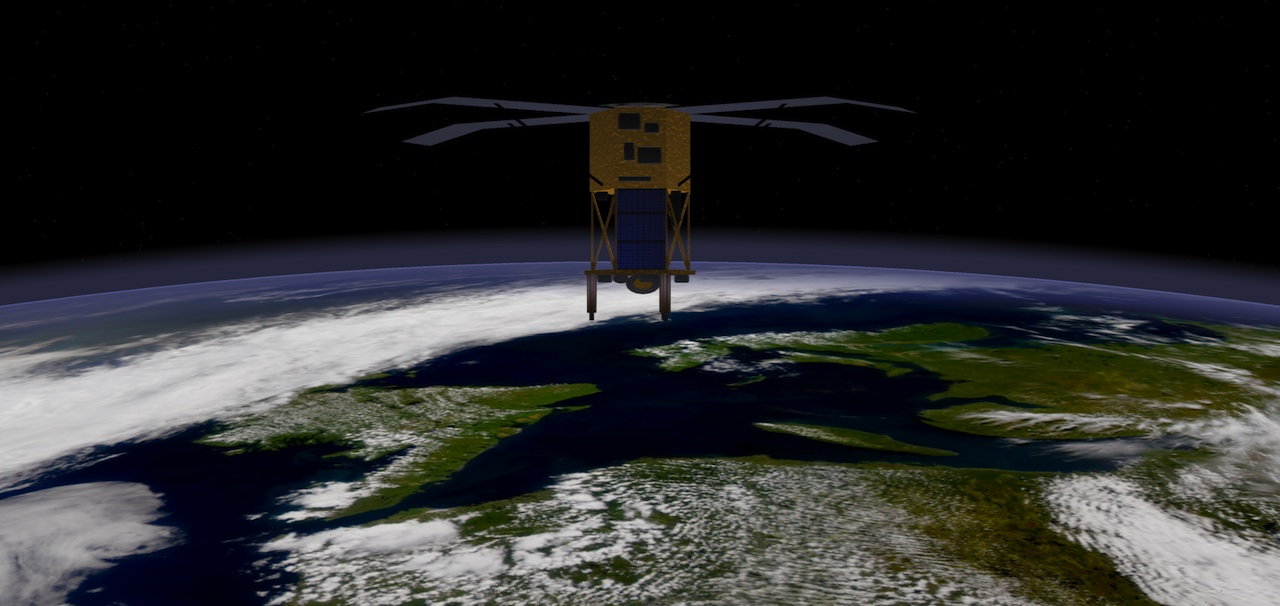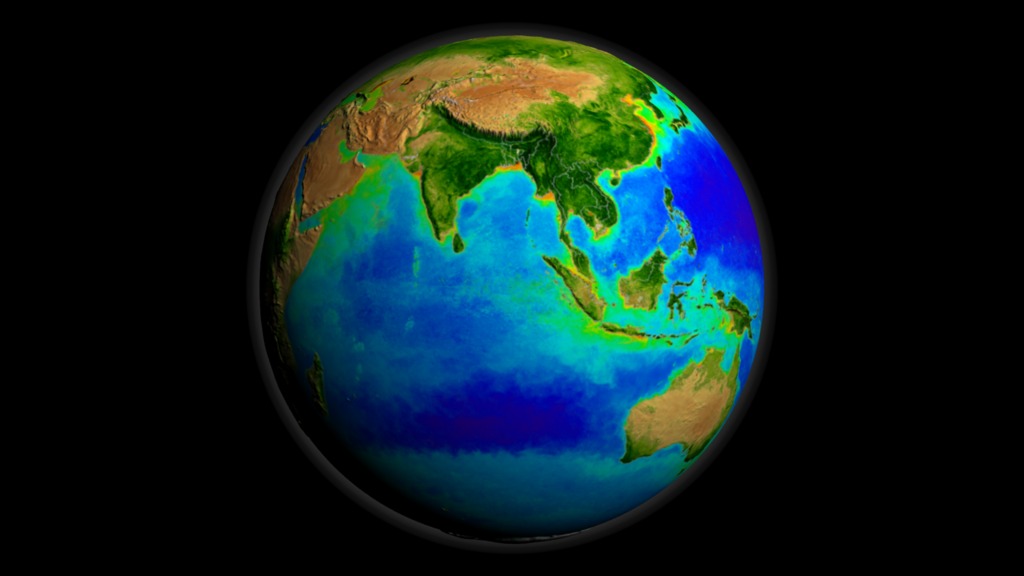Marine Deserts On The Move
The Sahara. The Gobi. The Mojave. Viewed from space, the dearth of vegetation in deserts paint vast swaths of tan on continents otherwise alive with green. The mesmerizing seasonal ebb and flow of vegetation dancing over the land and sea surface is the most noticeable feature of the first visualization below, which shows a full ten-year span of data from a NASA satellite instrument called the Sea-viewing Wide Field-of-View Sensor (SeaWiFS). More surprising is what SeaWiFS reveals about plant life in the oceans. Vast oceanic "deserts," seen here as dark blue and purple, stretch across large portions of the tropics in all major ocean basins. Here, nutrient-starved, warm waters make it nearly impossible for phytoplankton to survive. More than a decade of SeaWiFS data shows these biological deserts are growing at a rapid rate. Meanwhile, productive areas of the ocean (light green and yellow in the animation) have shrunk by between 1 and 4 percent each year for the last decade. Scientists suspect climate change is the culprit, but they need longer-term satellite records to rule out natural variations.

Thirteen years of data show marine deserts (dark blue) in warm water, a bounty of life (light green) in cool water, and abundant life (red) near coasts.

Phytoplankton struggles to survive in vast marine deserts (dark blue) that are caused by a lack of cool, nutrient-rich water at the surface.

River outflows send nutrients seaward generating explosive growth of phytoplankton (orange, red) near the coast of California.

Notice the plankton (red, yellow, green) along the coastline and the sparse life (blue) along the northern edge of the Gulf Stream.
Plant life in the sea (light green) and on land (dark green) varies over ten years as environmental conditions change with the seasons.
For 13 years, SeaWiFS measured plant life on land and sea.

Satellite observations show where plants thrive—or struggle to survive—on land and sea.
Credits
Please give credit for this item to:
NASA/Goddard Space Flight Center, The SeaWiFS Project and GeoEye. NOTE: All SeaWiFS images and data presented on this web site are for research and educational use only. All commercial use of SeaWiFS data must be coordinated with GeoEye (NOTE: In January 2013, DigitalGlobe and GeoEye combined to become DigitalGlobe).
-
Animator
- Alex Kekesi (Global Science and Technology, Inc.)
-
Video editor
- Brooke Harris (USRA)
-
Interviewee
- Gene Feldman (NASA/GSFC)
-
Producer
- Brooke Harris (USRA)
-
Scientist
- Gene Feldman (NASA/GSFC)
-
Videographer
- Rob Andreoli (Advocates in Manpower Management, Inc.)
-
Writer
- Adam P Voiland (Wyle Information Systems)
Release date
This page was originally published on Thursday, January 27, 2011.
This page was last updated on Wednesday, May 3, 2023 at 1:53 PM EDT.

